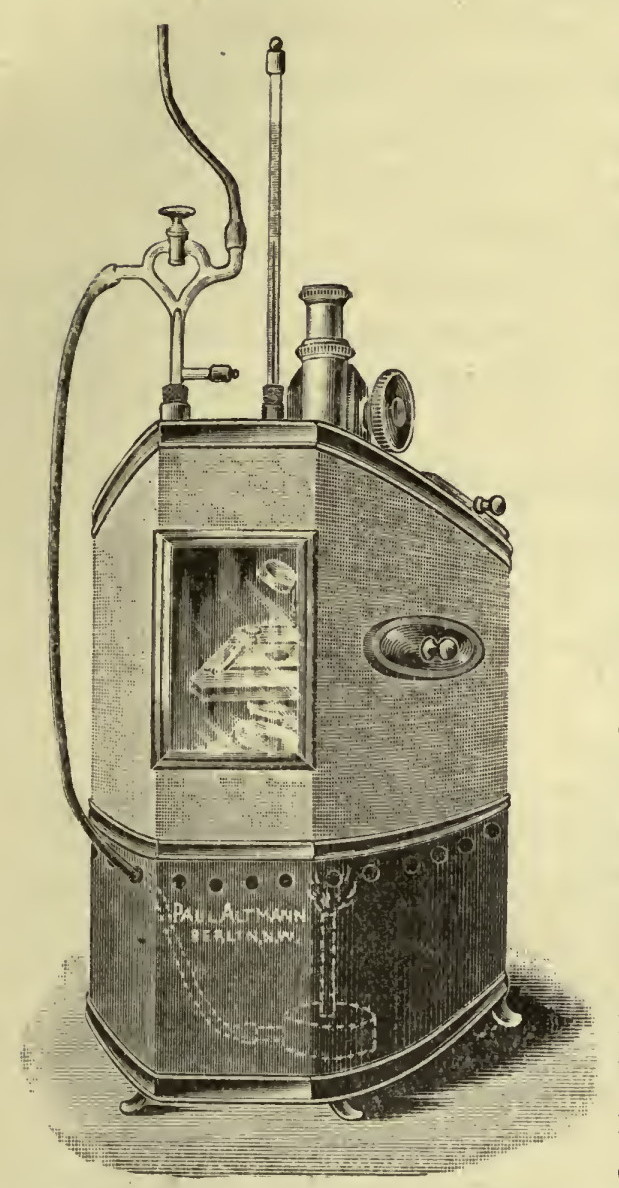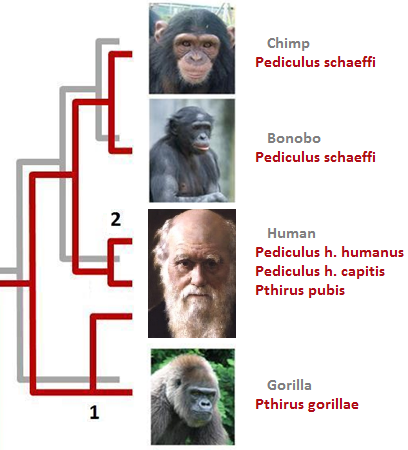|
Nuttalliella
''Nuttalliella namaqua'' is a tick found in southern Africa from Tanzania to Namibia and South Africa, which is placed in its own family, Nuttalliellidae. It can be distinguished from ixodid ticks and argasid ticks by a combination of characteristics including the position of the stigmata, lack of setae, strongly corrugated integument, and form of the fenestrated plates. It is the most basal lineage of ticks. History Early zoological descriptions The first description by G.A.H. Bedford in 1931 was based upon a single female collected under a stone at Kamieskroon, in Little Namaqualand, by Dr R.F. Lawrence in October 1930. (1931):''Nuttalliella namaqua'', a new genus and species of tick. ''Parasitology'' 23 (2): 230-232. The genus and family were named for the bacteriologist George Nuttall, a specialist in diseases transmitted by ticks. As of 1980, only eighteen specimens had been collected. In a 2011 study, that number was increased to fifty-one total specimens. They ... [...More Info...] [...Related Items...] OR: [Wikipedia] [Google] [Baidu] |
|
 |
Tick
Ticks (order Ixodida) are parasitic arachnids that are part of the mite superorder Parasitiformes. Adult ticks are approximately 3 to 5 mm in length depending on age, sex, species, and "fullness". Ticks are external parasites, living by feeding on the blood of mammals, birds, and sometimes reptiles and amphibians. The timing of the origin of ticks is uncertain, though the oldest known tick fossils are from the Cretaceous period, around 100 million years old. Ticks are widely distributed around the world, especially in warm, humid climates. Ticks belong to two major families, the Ixodidae or hard ticks, and the Argasidae, or soft ticks. '' Nuttalliella,'' a genus of tick from southern Africa is the only member of the family Nuttalliellidae, and represents the most primitive living lineage of ticks. Adults have ovoid/pear-shaped bodies (idiosomas) which become engorged with blood when they feed, and eight legs. Their cephalothorax and abdomen are completely fused. In ad ... [...More Info...] [...Related Items...] OR: [Wikipedia] [Google] [Baidu] |
 |
George Nuttall
George Henry Falkiner Nuttall FRS (5 July 1862 – 16 December 1937) was an American-British bacteriologist who contributed much to the knowledge of parasites and of insect carriers of diseases. He made significant innovative discoveries in immunology, about life under aseptic conditions, in blood chemistry, and about diseases transmitted by arthropods, especially ticks. He carried out investigations into the distribution of Anopheline mosquitoes in England in relation to the previous prevalence of malaria there. With William Welch he identified the organism responsible for causing gas gangrene. Life Nuttall was born in San Francisco, the second of three sons and two daughters of Robert Kennedy Nuttall, a British doctor who had migrated to San Francisco in 1850, and Magdalena, daughter of John Parrott of San Francisco. In 1865 the family moved to Europe. The children were educated in England, France, Germany and Switzerland. As a result, Nuttall spoke German, French, Italian ... [...More Info...] [...Related Items...] OR: [Wikipedia] [Google] [Baidu] |
|
Gerald Augustus Harold Bedford
Gerald Augustus Harold Bedford ( – ) was a British entomologist of the 20th century who specialised in ticks from South Africa. He first worked at the British Museum, British Museum of Natural History with Frederick Vincent Theobald, F.V. Theobald and then was nominated as entomologist at the ''Division of Veterinary Services'' of the University of Pretoria in Onderstepoort on the 20. There, he studied vertebrate parasites (mites, ticks and lice). He started to collect species of ticks for the ''National Tick Collection'' in 1912, with nymphs of ''Aponomma exornatum'' collected in Onderstepoort. In 1920, he was promoted ''Research Officer'' in Onderstepoort. in Biodiversity Explorer He died in 1938 at the age of 46. Authored Taxa Between 1912 and 1938, Bedford discovere ...[...More Info...] [...Related Items...] OR: [Wikipedia] [Google] [Baidu] |
|
|
Parasitology (journal)
''Parasitology'' is a peer-reviewed scientific journal covering the area of parasitology, including the biochemistry, molecular biology, genetics, ecology and epidemiology of eukaryotic parasites, and the relationship between the host and the parasite. It was established in 1908 and is published fourteen times a year by Cambridge University Press. The editor-in-chief is John Russell Stothard (Liverpool School of Tropical Medicine; from 2015). According to the ''Journal Citation Reports'', the journal has a 2017 impact factor of 2.511, ranking it 15th out of 37 journals in the category "Parasitology". Cambridge University Press announced that as of 3 October 2022, publishing would be switching to gold open access Open access (OA) is a set of principles and a range of practices through which research outputs are distributed online, free of access charges or other barriers. With open access strictly defined (according to the 2001 definition), or libre o .... Abstracting and i ... [...More Info...] [...Related Items...] OR: [Wikipedia] [Google] [Baidu] |
|
_Lorryia_formosa_2_edit.jpg) |
Acari Genera
Mites are small arachnids (eight-legged arthropods). Mites span two large orders of arachnids, the Acariformes and the Parasitiformes, which were historically grouped together in the subclass Acari, but genetic analysis does not show clear evidence of a close relationship. Most mites are tiny, less than in length, and have a simple, unsegmented body plan. The small size of most species makes them easily overlooked; some species live in water, many live in soil as decomposers, others live on plants, sometimes creating galls, while others again are predators or parasites. This last type includes the commercially destructive ''Varroa'' parasite of honey bees, as well as scabies mites of humans. Most species are harmless to humans, but a few are associated with allergies or may transmit diseases. The scientific discipline devoted to the study of mites is called acarology. Evolution and taxonomy The mites are not a defined taxon, but is used for two distinct groups of arachnids ... [...More Info...] [...Related Items...] OR: [Wikipedia] [Google] [Baidu] |
 |
Permian Extinction
The Permian ( ) is a geologic period and stratigraphic system which spans 47 million years from the end of the Carboniferous Period million years ago (Mya), to the beginning of the Triassic Period 251.9 Mya. It is the last period of the Paleozoic Era; the following Triassic Period belongs to the Mesozoic Era. The concept of the Permian was introduced in 1841 by geologist Sir Roderick Murchison, who named it after the region of Perm in Russia. The Permian witnessed the diversification of the two groups of amniotes, the synapsids and the sauropsids ( reptiles). The world at the time was dominated by the supercontinent Pangaea, which had formed due to the collision of Euramerica and Gondwana during the Carboniferous. Pangaea was surrounded by the superocean Panthalassa. The Carboniferous rainforest collapse left behind vast regions of desert within the continental interior. Amniotes, which could better cope with these drier conditions, rose to dominance in place of their amph ... [...More Info...] [...Related Items...] OR: [Wikipedia] [Google] [Baidu] |
|
Diapsid
Diapsids ("two arches") are a clade of sauropsids, distinguished from more primitive eureptiles by the presence of two holes, known as temporal fenestrae, in each side of their skulls. The group first appeared about three hundred million years ago during the late Carboniferous period. All diapsids other than the most primitive ones in the clade Araeoscelidia are sometimes placed into the clade Neodiapsida. The diapsids are extremely diverse, and include birds and all modern reptile groups, including turtles, which were historically thought to lie outside the group. Although some diapsids have lost either one hole (lizards), or both holes (snakes and turtles), or have a heavily restructured skull (modern birds), they are still classified as diapsids based on their ancestry. At least 17,084 species of diapsid animals are extant: 9,159 birds, and 7,925 snakes, lizards, tuatara, turtles, and crocodiles. Characteristics The name Diapsida means "two arches", and diapsids are tra ... [...More Info...] [...Related Items...] OR: [Wikipedia] [Google] [Baidu] |
|
 |
Therapsid
Therapsida is a major group of eupelycosaurian synapsids that includes mammals, their ancestors and relatives. Many of the traits today seen as unique to mammals had their origin within early therapsids, including limbs that were oriented more underneath the body, as opposed to the sprawling posture of many reptiles and salamanders. Therapsids evolved from " pelycosaurs", specifically within the Sphenacodontia, more than 279.5 million years ago. They replaced the "pelycosaurs" as the dominant large land animals in the Middle Permian through to the Early Triassic. In the aftermath of the Permian–Triassic extinction event, therapsids declined in relative importance to the rapidly diversifying reptiles during the Middle Triassic. The therapsids include the cynodonts, the group that gave rise to mammals ( Mammaliaformes) in the Late Triassic, around 225 million years ago. Of the non-mammalian therapsids, only cynodonts survived beyond the end of the Triassic, with the only ot ... [...More Info...] [...Related Items...] OR: [Wikipedia] [Google] [Baidu] |
 |
Host Switch
In parasitology and epidemiology, a host switch (or host shift) is an evolutionary change of the host specificity of a parasite or pathogen. For example, the human immunodeficiency virus used to infect and circulate in non-human primates in West-central Africa, but switched to humans in the early 20th century. All symbiotic species, such as parasites, pathogens and mutualists, exhibit a certain degree of host specificity. This means that pathogens are highly adapted to infect a specific host - in terms of but not limited to receptor binding, countermeasures for host restriction factors and transmission methods. They occur in the body (or on the body surface) of a single host species or – more often – on a limited set of host species. In the latter case, the suitable host species tend to be taxonomically related, sharing similar morphology and physiology. Speciation is the creation of a new and distinct species through evolution and so unique differences exist between all l ... [...More Info...] [...Related Items...] OR: [Wikipedia] [Google] [Baidu] |
|
Permian Extinction Event
The Permian ( ) is a geologic period and stratigraphic system which spans 47 million years from the end of the Carboniferous Period million years ago (Mya), to the beginning of the Triassic Period 251.9 Mya. It is the last period of the Paleozoic Era; the following Triassic Period belongs to the Mesozoic Era. The concept of the Permian was introduced in 1841 by geologist Sir Roderick Murchison, who named it after the region of Perm in Russia. The Permian witnessed the diversification of the two groups of amniotes, the synapsids and the sauropsids ( reptiles). The world at the time was dominated by the supercontinent Pangaea, which had formed due to the collision of Euramerica and Gondwana during the Carboniferous. Pangaea was surrounded by the superocean Panthalassa. The Carboniferous rainforest collapse left behind vast regions of desert within the continental interior. Amniotes, which could better cope with these drier conditions, rose to dominance in place of their amphi ... [...More Info...] [...Related Items...] OR: [Wikipedia] [Google] [Baidu] |
|
|
Succulent Karoo
The Succulent Karoo is a ecoregion defined by the World Wide Fund for Nature to include regions of desert in South Africa and Namibia, and a biodiversity hotspot. The geographic area chosen by the WWF for what they call 'Succulent Karoo' does not correspond to the actual Karoo. Geography The Succulent Karoo stretches along the coastal strip of southwestern Namibia and South Africa's Northern Cape Province, where the cold Benguela Current offshore creates frequent fogs. The ecoregion extends inland into the uplands of South Africa's Western Cape Province. It is bounded on the south by the Mediterranean climate fynbos, on the east by the Nama Karoo, which has more extreme temperatures and variable rainfall, and on the north by the Namib Desert. Flora The Succulent Karoo is notable for the world's richest flora of succulent plants, and harbours about one-third of the world’s approximately 10,000 succulent species. 40% of its succulent plants are endemic. The region is extraord ... [...More Info...] [...Related Items...] OR: [Wikipedia] [Google] [Baidu] |